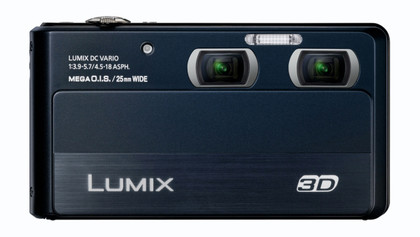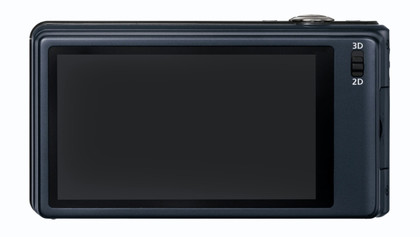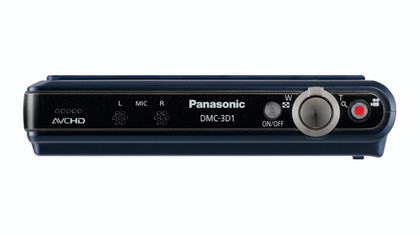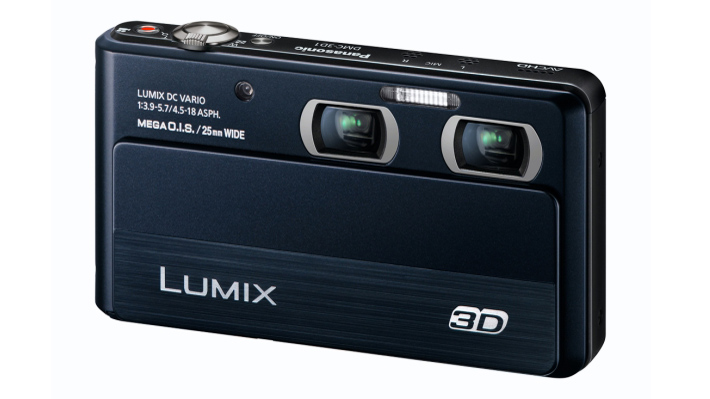TechRadar Verdict
Pros
- +
Great touchscreen
- +
True 3D capture
- +
Multitasks
- +
Lightweight
- +
Simple
Cons
- -
No 3D playback
- -
Limited controls
- -
Small sensor
- -
Poor battery life
Why you can trust TechRadar
Panasonic, Sony and Samsung are three companies with an obvious vested interest in pushing 3D imaging; they've been spearheading the campaign to encourage us all switch to 3D TVs for the past couple of years.
However, none of them have delivered a dedicated, 'true' 3D digital camera - until now. The Panasonic Lumix DMC-3D1 - or Panasonic Lumix DMC-3D1K, as it's called in the US - squeezes two lenses and a pair of 1/2.3-type sensors into a compact body.
This makes a welcome change from the software tricks that create a 3D image captured by a single lens, used by most cameras offering a 3D mode.

Two lenses are better than one when it comes to 3D photography. By capturing separate views of a scene from offset positions, there's a greater chance of enhanced stereoscopic effect in the final image.
The Panasonic Lumix 3D1 can capture industry-standard 3D MPO files (and 2D JPEGs) that can be viewed on 3D TVs.
Using twin lenses means that moving subjects can also be captured convincingly in 3D. The Sony Cyber-Shot HX9V, Panasonic TZ30, Samsung WB750 and other traditional '2D' single-lens cameras that include software-based 3D modes, need to be moved during the exposure while the camera takes separate frames.
This method obviously has drawbacks where action photography is concerned, because the pictures that the camera combines to build the 3D image won't be taken at the same point in time.
Sign up for breaking news, reviews, opinion, top tech deals, and more.

The Panasonic Lumix 3D1 isn't the first digital compact camera to offer twin-lens 3D photography - Fujifilm got there first with the Fuji FinePix Real 3D W1 in 2009, and its successor the Fuji FinePix Real 3D W3 in 2010. What's more, the Fuji 3D cameras were the world's first cameras that enabled you to view images in 3D on their rear screens, without the need for 3D glasses.
There's no such functionality on the Panasonic Lumix DMC-3D1, but Panasonic does claim it is the "The world's smallest 3D photo and 3D video camera with 2 lens system". To be fair, it doesn't exactly have much competition. The Fuji W3 is noticeably chunkier, and 59g heavier.
Other than the 3D element, the Panasonic Lumix 3D1 offers a fairly standard set of mid-range compact camera specifications. A pair of 12.1 megapixel sensors are fed an image via two 4x optical zoom lenses. Each of these offers an equivalent 25-100mm reach for 2D shooting and 30-132mm in 3D (at 4:3 aspect ratio).
1080i HD video recording is offered in both 2D and 3D modes, while Panasonic's MEGA OIS optical stabilisation system keeps pictures steady.

Standard ISO sensitivity runs from 100 to 3200, while a High Sensitivity mode boosts this to ISO 6400.
It's the control interface that makes the Panasonic Lumix 3D1 suitably standout: everything bar shooting, zooming and switching from 2D to 3D needs to be done via a large touchscreen.
The Panasonic Lumix DMC-3D1 has a UK price of £449.99, and costs $499.99 in the US, where it's known as the Panasonic Lumix DMC-3D1K.
